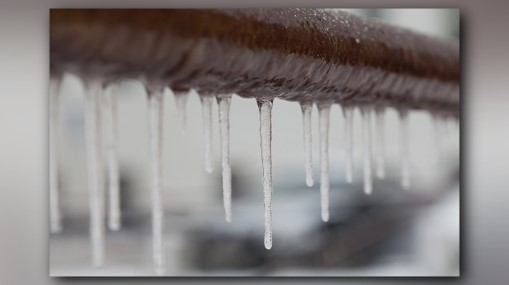Tips for Preventing Frozen Plumbing in Cold Weather: Specialist Insights
Tips for Preventing Frozen Plumbing in Cold Weather: Specialist Insights
Blog Article
We have found the article about Prevent Frozen Pipes below on the internet and felt it made good sense to talk about it with you in this article.

Cold weather can wreak havoc on your pipes, specifically by freezing pipelines. Right here's how to stop it from occurring and what to do if it does.
Introduction
As temperature levels decrease, the threat of frozen pipelines increases, possibly leading to expensive fixings and water damages. Understanding how to prevent frozen pipes is important for house owners in chilly climates.
Understanding Icy Pipes
What creates pipelines to freeze?
Pipes freeze when subjected to temperature levels listed below 32 ° F (0 ° C) for expanded durations. As water inside the pipelines freezes, it increases, taxing the pipeline walls and potentially triggering them to rupture.
Risks and damages
Icy pipelines can result in water supply disturbances, home damages, and pricey repairs. Burst pipes can flood homes and cause substantial architectural damage.
Signs of Frozen Water Lines
Determining frozen pipelines early can avoid them from breaking.
How to determine icy pipes
Search for decreased water flow from taps, unusual odors or sounds from pipelines, and visible frost on exposed pipelines.
Prevention Tips
Insulating at risk pipes
Wrap pipelines in insulation sleeves or utilize warm tape to shield them from freezing temperatures. Concentrate on pipes in unheated or outside areas of the home.
Home heating techniques
Maintain interior rooms adequately heated up, specifically areas with pipes. Open up cabinet doors to enable cozy air to circulate around pipes under sinks.
Shielding Outdoor Plumbing
Yard tubes and outdoor faucets
Detach and drain pipes yard tubes before winter season. Set up frost-proof faucets or cover outside taps with shielded caps.
What to Do If Your Pipelines Freeze
Immediate activities to take
If you believe icy pipelines, maintain taps available to eliminate stress as the ice thaws. Utilize a hairdryer or towels soaked in hot water to thaw pipelines slowly.
Long-Term Solutions
Architectural changes
Consider rerouting pipes away from exterior wall surfaces or unheated locations. Include added insulation to attic rooms, cellars, and crawl spaces.
Updating insulation
Purchase premium insulation for pipes, attics, and walls. Correct insulation aids preserve constant temperatures and reduces the threat of icy pipes.
Conclusion
Preventing icy pipes requires aggressive steps and quick reactions. By understanding the reasons, indications, and safety nets, house owners can safeguard their pipes throughout winter.
5 Ways to Prevent Frozen Pipes
Drain Outdoor Faucets and Disconnect Hoses
First, close the shut-off valve that controls the flow of water in the pipe to your outdoor faucet. Then, head outside to disconnect and drain your hose and open the outdoor faucet to allow the water to completely drain out of the line. Turn off the faucet when done. Finally, head back to the shut-off valve and drain the remaining water inside the pipe into a bucket or container. Additionally, if you have a home irrigation system, you should consider hiring an expert to clear the system of water each year.
Insulate Pipes
One of the best and most cost-effective methods for preventing frozen water pipes is to wrap your pipes with insulation. This is especially important for areas in your home that aren’t exposed to heat, such as an attic. We suggest using foam sleeves, which can typically be found at your local hardware store.
Keep Heat Running at 65
Your pipes are located inside your walls, and the temperature there is much colder than the rest of the house. To prevent your pipes from freezing, The Insurance Information Institute suggests that you keep your home heated to at least 65 degrees, even when traveling. You may want to invest in smart devices that can keep an eye on the temperature in your home while you’re away.
Leave Water Dripping
Moving water — even a small trickle — can prevent ice from forming inside your pipes. When freezing temps are imminent, start a drip of water from all faucets that serve exposed pipes. Leaving a few faucets running will also help relieve pressure inside the pipes and help prevent a rupture if the water inside freezes.
Open Cupboard Doors
Warm your kitchen and bathroom pipes by opening cupboards and vanities. You should also leave your interior doors ajar to help warm air circulate evenly throughout your home.

I came across that write up about Helpful Tips to Prevent Frozen Pipes this Winter while browsing the search engines. Appreciated our content? Please quickly share it. Let somebody else locate it. I truly appreciate reading our article about Winter Plumbing Precautions: Preventing Frozen Pipes.
Request Service Report this page